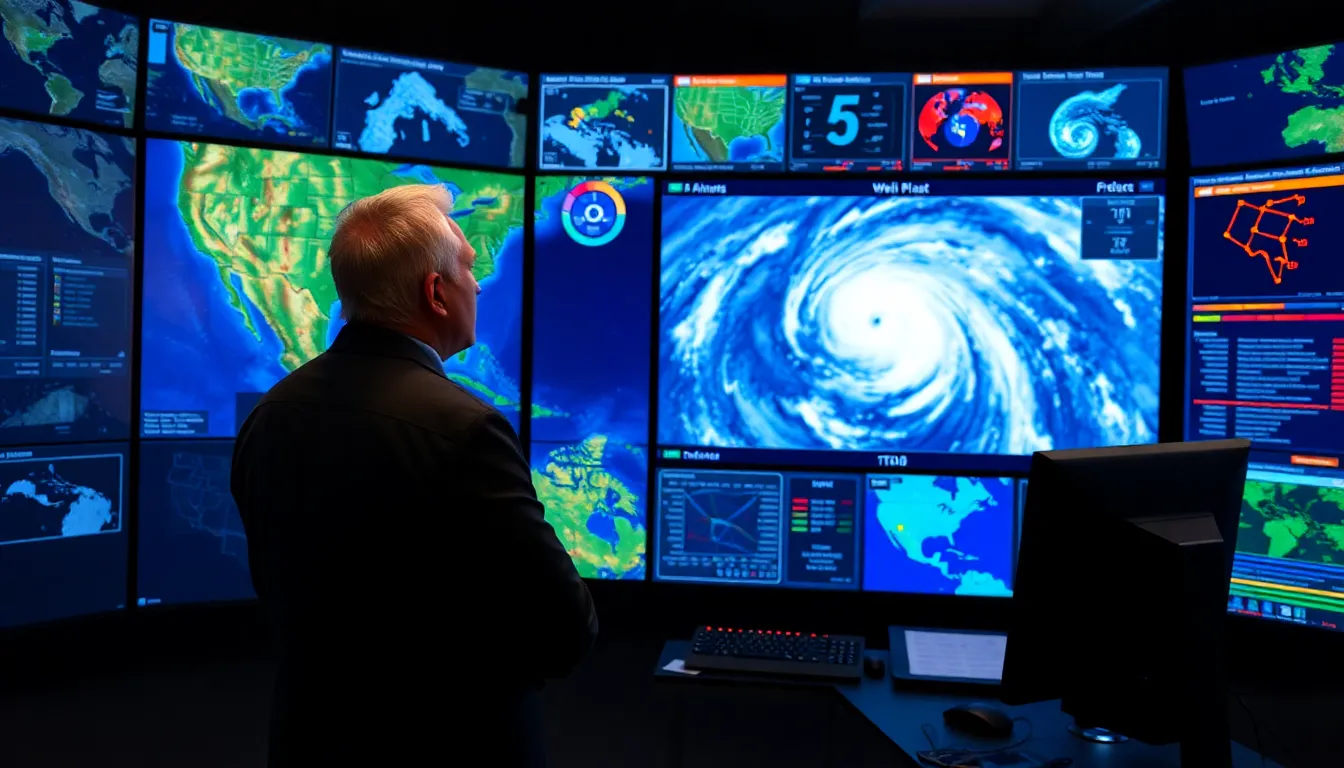As summer rolls on, so does the suspense of hurricane season in Florida. Will it be a gentle breeze or a full-blown Category 5 party crashing the Sunshine State? With palm trees swaying and weather apps buzzing, Floridians are glued to their screens, trying to decipher the latest forecasts.
Table of Contents
ToggleOverview of Hurricane Predictions
Hurricane predictions for Florida vary annually based on meteorological data and current atmospheric conditions. Many factors influence hurricane development, including sea surface temperatures and wind patterns. Current forecasts suggest increased tropical activity in the Atlantic Ocean due to warmer waters.
Predictions from the National Hurricane Center often indicate the likelihood of storms affecting Florida. Models project potential hurricane tracks as storms develop, helping residents prepare for possible impacts. Accurate tracking relies on satellite imagery and computer simulations.
Statistical data shows that Florida experiences roughly 1.6 hurricanes per season, yet the exact number fluctuates. Some seasons result in minimal activity, while others see multiple storms making landfall. The last severe hurricane to strike Florida was Hurricane Ian in 2022, causing extensive damage and prompting widespread evacuations.
Tracking systems update forecasts regularly as conditions change. Forecasters encourage residents to stay informed via local weather stations and emergency management agencies. Local agencies emphasize the importance of preparedness and having emergency plans in place before any hurricane threatens the area.
Understanding hurricane predictions is essential for Floridians. Monitoring forecasts allows residents to make informed decisions, ensuring safety and readiness during hurricane season.
Understanding Hurricane Tracks

Hurricane tracks provide vital information for Floridians during the season. Analyzing these paths helps residents anticipate potential impacts.
Factors Influencing Hurricane Paths
Atmospheric conditions heavily influence hurricane paths. Weather patterns like wind direction and speed affect the storm’s movement. Ocean temperatures also play a significant role; warmer water fuels storms, often steering them toward land. Geographic features, including land masses and coastal contours, can redirect hurricanes. Each season, meteorologists study these variables to predict possible trajectories, enhancing the accuracy of forecasts.
Tools for Tracking Hurricanes
Meteorologists rely on various tools for tracking hurricanes. Satellite imagery provides real-time visuals of storm formation and development. Weather radar systems detect precipitation and wind patterns, offering critical data on storm strength. Additionally, computer models simulate potential paths based on current meteorological conditions. The National Hurricane Center integrates this data, disseminating updates that help residents prepare for possible impacts. Frequent updates on local news channels ensure everyone stays informed.
Current Hurricane Forecasts for Florida
Floridians continue to monitor hurricane forecasts closely as the season progresses. Predictions rely heavily on accurate meteorological models and current atmospheric conditions.
Meteorological Models and Their Accuracy
Meteorological models play a crucial role in forecasting hurricane paths. Such models analyze data from satellite imagery and weather radar systems. Generally, models use multiple data sources to predict potential storm tracks. The National Hurricane Center collects and integrates this data, enhancing accuracy. In recent years, advancements in technology have improved forecasting precision, allowing for better preparation. Understanding these models helps residents anticipate possible impacts.
Recent Trends in Hurricane Activity
Recent trends indicate an uptick in tropical activity in the Atlantic. Increased ocean temperatures contribute to more frequent storm formation. Historical data shows Florida averages around 1.6 hurricanes annually, but fluctuations occur. Notably, Hurricane Ian’s devastation in 2022 underscores the risks Floridians face. Observing these patterns helps residents prepare for severe weather events. Florida’s unique geography also influences hurricane trajectories, making awareness essential. Being informed about trends allows for timely safety preparations.
Preparedness for Potential Hurricanes
Preparedness is key for Floridians facing potential hurricanes. Having a solid plan in place ensures families stay safe during severe weather events.
Emergency Kits and Supplies
Emergency kits provide essential items for those impacted by hurricanes. Stocking non-perishable food, water, and first aid supplies is critical. A battery-operated radio keeps individuals informed, and flashlights or batteries support visibility during power outages. Include hygiene products, important medications, and personal documents in your emergency kit. Regularly check and update supplies. Many rely on community resources for additional support, making local services handy during emergencies. Residents can consider additional items like cash, clothing, and blankets for comfort.
Evacuation Plans and Safe Zones
Evacuation plans allow families to act quickly when hurricanes approach. Offering predetermined routes and safe destinations keeps everyone on the same page. Identify local shelters and safe zones beforehand. Communication strategies, such as family emergency contacts, enhance coordination. Practice evacuation routes regularly to ensure familiarity with the process and create a sense of preparedness. Residents located in flood-prone areas should pay extra attention, as such areas face higher risks. Make sure that pets are included in evacuation plans to keep every family member safe.
Impact of Hurricanes on Florida
Hurricanes pose significant risks to Florida, affecting residents, infrastructure, and ecosystems. Understanding their historical impact reveals patterns that shape preparedness strategies.
Historical Data and Case Studies
Florida experiences about 1.6 hurricanes per season, but this data varies. Hurricane Ian in 2022 exemplified the devastation hurricanes can inflict, causing billions in damage and leading to extensive evacuations. Historical records show that major hurricanes, like Andrew in 1992, reshaped coastal regions and emergency response plans. Each storm highlights the need for effective preparedness measures, evidenced by the lessons learned from past events.
Economic and Environmental Effects
Hurricanes severely disrupt Florida’s economy, generating losses in tourism, agriculture, and property. Post-Hurricane Irma in 2017, the restoration costs soared to $50 billion, impacting local businesses for years. Ecosystem damage occurs as storms erode coastlines and disrupt habitats, affecting biodiversity. Restoration efforts often require significant funding and resources. With increasing storm frequency, understanding these economic and environmental ramifications becomes essential for Florida’s sustainability and recovery strategies.
Floridians face an anxious wait as hurricane season unfolds. With the potential for increased tropical activity and the looming threat of storms, staying informed is essential. Residents must rely on accurate forecasts and prepare for possible impacts.
Having a solid emergency plan in place can make a significant difference in ensuring safety. As history shows, hurricanes can cause devastating effects on lives and property. By understanding the risks and preparing accordingly, Floridians can better navigate the uncertainties of the season ahead.
Ultimately, vigilance and preparedness remain key to weathering whatever challenges may arise.




